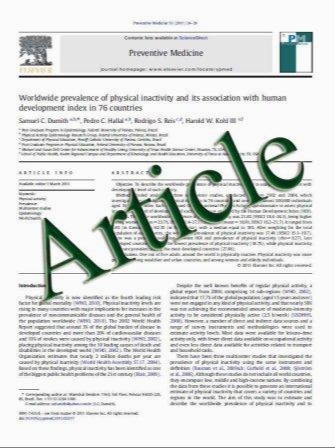Pharmacokinetics of intravenous amiodarone and its electrocardiographic effects on healthy Japanese subjects
- نوع فایل : کتاب
- زبان : انگلیسی
- مؤلف : Tsuyoshi Shiga Takanori Tanaka Shin Irie Nobuhisa Hagiwara Hiroshi Kasanuki
- چاپ و سال / کشور: 2010
Description
The aim of this phase I, dose-escalating study was to evaluate the pharmacokinetics, electrocardiographic effect and safety of amiodarone after a single intravenous administration in Japanese subjects. Thirty-two healthy Japanese male volunteers (20–32 years) were randomized to three single-dose groups (1.25, 2.5 and 5.0 mg/kg). In each group, six (1.25 mg/kg) or ten (2.5 and 5.0 mg/kg) subjects received a single 15-min infusion of intravenous amiodarone, and two subjects received glucose solution as control. The pharmacokinetic profile, blood pressure and electrocardiographic analyses were obtained on a timely basis after up to 77 days. The maximum plasma concentration (Cmax) and area under the concentration-time curve (AUC0–96) for amiodarone 1.25, 2.5 and 5.0 mg/kg displayed dose-dependent characteristics: mean Cmax was 2,920 ± 610, 7,140 ± 1,480 and 13,660 ± 3,410 ng/ml, respectively; the mean AUC0-96 was 3,600 ± 700, 8,100 ± 1,600 and 16,600 ± 4,300 ng h/ml, respectively. A long serum half-life ([14 days) was observed for amiodarone and desethylamiodarone. PR intervals were prolonged at 15 min (0.16 ± 0.0.1 vs. 0.15 ± 0.01 s, p = 0.03) and 18 min (0.17 ± 0.01 vs. 0.15 ± 0.01 s, p = 0.03) with the 5.0 mg/kg dose compared with baseline. No other significant changes in electrocardiographic parameters, pulse rate or blood pressure were observed. A needle-pain-induced vasovagal effect appeared in a volunteer, and three volunteers experienced pain at the drug infusion site. After a single infusion of amiodarone at doses of 1.25–5.0 mg/kg, serum concentrations increased in a dose-dependent manner. A single intravenous amiodarone dose barely affected the electrocardiographic parameters and was well tolerated.
Heart Vessels (2011) 26:274–281 DOI 10.1007/s00380-010-0047-7 Received: 17 December 2009 / Accepted: 1 April 2010 / Published online: 30 October 2010


